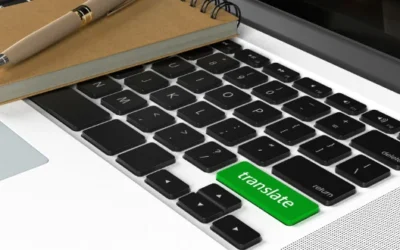Translation work has evolved dramatically in the digital age. If you’re exploring the world of professional translation, you’ve likely encountered the term “CAT tools” in your research.
In this article, we’ll explore what CAT tools are and why they’ve become essential resources for translators worldwide.
What are CAT tools?
CAT tools, short for Computer-Assisted Translation tools, are specialized software designed to help human translators work more efficiently. They’re not automatic translation systems that replace human expertise—instead, they support translators with features that enhance productivity, consistency, and quality.
These digital assistants store previous translations, manage terminology, and provide a structured workspace that makes handling complex translation projects much more manageable.
Unlike machine translation, which attempts to generate translations without human input, CAT tools put translators in control while providing helpful support functions.
CAT tools vs. Machine translation: What’s different?
The distinction between CAT tools and machine translation is often misunderstood by those outside the translation industry.
When people think about translation technology, they often picture fully automated systems like Google Translate. However, CAT tools represent a completely different approach to translation technology, enhancing human capabilities rather than replacing them.
The key differences between CAT tools and machine translation include:
- Machine translation systems (like Google Translate) produce complete translations automatically, often with mixed results
- Machine translation works independently of human translators and generates output based on programming and training data
- CAT tools are designed as productivity tools for professional translators
- With CAT tools, translators maintain full control over the translation process, making all creative and linguistic decisions
- The human-centered approach of CAT tools ensures better accuracy and quality
- CAT tools make translators’ work more efficient by eliminating unnecessary repetition and providing helpful references
CAT tools and TMS platforms: They are not the same
Translation technology encompasses various tools designed for different aspects of the translation workflow. A common point of confusion is understanding how CAT tools relate to Translation Management Systems (TMS).
Are CAT tools the same as TMS platforms? No, these technologies often work together in professional translation workflows, but they serve different purposes and shouldn’t be considered interchangeable.
- Translation Management Systems focus primarily on the administrative side of translation work: managing teams, tracking projects, handling deadlines, and coordinating workflows between multiple stakeholders. Think of TMS as project management software specifically designed for translation companies.
- CAT tools, meanwhile, concentrate on the translator’s actual work environment—the interface where translation happens. They’re focused on making the translation process itself more efficient through features like translation memory and terminology management.
While many modern platforms integrate both CAT and TMS functionalities, they remain conceptually distinct components of the translation technology landscape.
A freelance translator might use a CAT tool without needing a full TMS, while a project manager might interact primarily with the TMS interface.
Core features of CAT tools
What makes CAT tools so valuable to professional translators? While each tool has its unique characteristics, most CAT tools share several key features that form the foundation of their functionality.
Let’s look at the essential components that define what CAT tools are and how they support the translation process.
Translation memory
At the heart of most CAT tools is the translation memory (TM) system—a database that stores previously translated segments of text alongside their source versions.
When a translator encounters a sentence or phrase similar to something they’ve translated before, the CAT tool recognizes the similarity and suggests the previous translation.
This feature is especially valuable when working with technical documentation, legal texts, or any content with repetitive elements.
Translation memory doesn’t just save time—it also improves consistency across large projects or related documents. When a specific phrase has been translated once, it can be translated the same way every time it appears, creating a more cohesive final product.
Terminology glossaries
Consistent terminology is crucial in professional translation, especially in specialized fields like medicine, law, or engineering, where precise terms must be used correctly.
CAT tools include terminology management systems that store approved translations for specific terms. These glossaries ensure that important vocabulary is translated consistently throughout a project and across multiple translators working on the same content.
When a translator encounters a term that’s in the glossary, the CAT tool highlights it and suggests the approved translation, helping maintain terminological precision without requiring the translator to memorize extensive vocabulary lists.
Style and formatting guidance
Many CAT tools allow project managers or clients to incorporate style guides and formatting requirements directly into the translation environment.
These built-in guidelines help translators follow client-specific preferences for tone, grammar, or regional language variations. They also preserve formatting elements like bold text, hyperlinks, or numbered lists, reducing the time spent on post-translation formatting.
Some advanced CAT tools even include features for ensuring adherence to brand voice or specialized style requirements, creating more consistent results across multiple translators or projects.
Built-in quality checks
Quality assurance is a critical part of professional translation, and CAT tools incorporate various QA functions to help catch potential issues before delivery.
These automated checks can flag inconsistencies, missing numbers, spelling errors, or terminology violations. They serve as an initial quality control layer—not a replacement for human proofreading, but a valuable supplement that catches mechanical errors that might otherwise slip through.
Some CAT tools also offer more advanced quality checks like grammar verification, readability assessment, or comparison against reference materials, creating a comprehensive quality control system within the translation environment.
Examples of popular CAT tools
The market offers numerous CAT tools with varying features and specializations. Here’s a brief overview of some widely used options in the professional translation industry:
- Trados Studio: Perhaps the most recognized name in CAT tools, Trados is widely used in translation agencies and enterprise settings. It offers comprehensive features but has a steeper learning curve.
- MemoQ: Known for its intuitive interface, MemoQ is popular among both freelancers and translation teams. It balances powerful features with user-friendliness.
- OmegaT: An open-source, free CAT tool that provides core functionality without subscription costs. It’s a good starting point for beginners or translators with limited budgets.
- Smartcat: Cloud-based platform that offers a free basic plan with collaboration features, making it an accessible entry point for new translators.
Why professional translators rely on CAT tools
CAT tools have become industry standards in professional translation for good reason—they offer significant advantages that improve both the translation process and its results.
Faster turnaround times
By eliminating the need to retranslate repeated content, CAT tools significantly reduce the time required to complete projects. Translation memory automatically identifies previously translated segments, allowing translators to focus their creative energy on new content.
This efficiency is particularly valuable when working with technical documentation, website content, or product descriptions—materials often containing substantial repetition across pages or updates.
More consistency across projects
Maintaining consistency in terminology, phrasing, and style becomes much more manageable with CAT tools. Translation memories and terminology databases ensure that specific phrases and terms are translated identically throughout a project and across related assignments.
This consistency is especially important for brand materials, technical documentation, or legal content, where precision and uniformity are essential quality markers.
Better collaboration with teams and clients
Many modern CAT tools include collaboration features that facilitate teamwork among translators, editors, and clients. These platforms allow multiple contributors to work on the same project simultaneously while maintaining version control and communication channels.
Some tools also enable clients to provide contextual notes, reference materials, or direct feedback within the translation environment, creating more streamlined communication and reducing revision cycles.
Cost-efficiency over time
While there’s an initial investment in purchasing and learning CAT tools, they typically generate significant cost savings over time. Clients often pay reduced rates for repeated content (leveraging translation memory), while translators can complete projects more efficiently.
The advantages of quality improvements and consistency also reduce the need for extensive revisions or corrections, creating additional time and cost savings throughout the translation process.
Conclusion
As we’ve explored throughout this article, CAT tools represent an essential technology for modern translators seeking to deliver high-quality work efficiently and consistently.
Understanding what CAT tools are—and what they aren’t—helps translators make informed decisions about which technologies to incorporate into their professional workflows.
At Translate With Style, we recognize the transformative impact that the right tools can have on translation quality and efficiency.
Our team of professional translators leverages advanced CAT tools alongside human expertise to deliver precise, culturally-appropriate translations across multiple languages and specialties.
Whether you’re just beginning your translation career or looking to enhance your existing translation processes, investing time in learning and adopting appropriate CAT tools can significantly improve your productivity and the quality of your translations.
FAQ
Are there any free CAT tools?
Yes. OmegaT and MateCat are popular free options. They don’t offer all the premium features of paid tools, but they’re excellent starting points for new translators or smaller projects. Many commercial CAT tools also offer free trials or limited free versions that allow translators to explore their functionality before making a purchase.
What is the most popular CAT tool?
Trados Studio is often considered the industry standard, especially in agency and enterprise environments. However, freelancers might prefer MemoQ or OmegaT depending on their specific workflow needs and client requirements. The “best” CAT tool varies based on individual preferences, project types, and budget considerations.
What is the main purpose of a CAT tool?
The primary purpose of CAT tools is to help translators work smarter, not harder, by making the translation process faster, more accurate, and more consistent without sacrificing quality. They handle repetitive tasks and technical details, allowing human translators to focus on the creative and nuanced aspects of language transfer that require human expertise.




